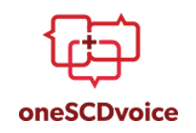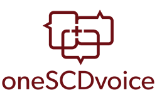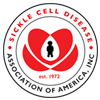Trusted Resources: Evidence & Education
Scientific literature and patient education texts
Inhaled nitric oxide for acute chest syndrome in adult sickle cell patients: a randomized controlled study
source: Intensive Care Medicine
year: 2015
authors: Maitre B, Djibre M, Katsahian S, Habibi A, Stankovic Stojanovic K, Khellaf M, Bourgeon I, Lionnet F, Charles-Nelson A, Brochard L, Lemaire F, Galacteros F, Brun-Buisson C, Fartoukh M, Mekontso Dessap A
summary/abstract:PURPOSE:
Previous clinical trials suggested that inhaled nitric oxide (iNO) could have beneficial effects in sickle cell disease (SCD) patients with acute chest syndrome (ACS).
METHODS:
To determine whether iNO reduces treatment failure rate in adult patients with ACS, we conducted a prospective, double-blind, randomized, placebo-controlled clinical trial. iNO (80 ppm, N = 50) gas or inhaled nitrogen placebo (N = 50) was delivered for 3 days. The primary end point was the number of patients with treatment failure at day 3, defined as any one of the following: (1) death from any cause, (2) need for endotracheal intubation, (3) decrease of PaO2/FiO2 ≥ 15 mmHg between days 1 and 3, (4) augmented therapy defined as new transfusion or phlebotomy.
RESULTS:
The two groups did not differ in age, gender, genotype, or baseline characteristics and biological parameters. iNO was well tolerated, although a transient decrease in nitric oxide concentration was mandated in one patient. There was no significant difference in the primary end point between the iNO and placebo groups [23 (46 %) and 29 (58 %); odds ratio (OR), 0.8; 95 % CI, 0.54-1.16; p = 0.23]. A post hoc analysis of the 45 patients with hypoxemia showed that those in the iNO group were less likely to experience treatment failure at day 3 [7 (33.3 %) vs 18 (72 %); OR = 0.19; 95 % CI, 0.06-0.68; p = 0.009].
CONCLUSIONS:
iNO did not reduce the rate of treatment failure in adult SCD patients with mild to moderate ACS. Future trials should target more severely ill ACS patients with hypoxemia.
DOI: 10.1007/s00134-015-4060-2
read more full text
Related Content
-
Imara Reports Favorable Preclinical and Phase 1 Data on IMR-687 in Sickle Cell DiseaseImara Inc. today announced it will repor...
-
Trends in Sickle Cell Disease – Related Mortality in the United States, 1979 to 2017Study objective: We provide an updated ...
-
Researchers ID key drivers of heart complications in sickle cell anemiaStudy opens path to earlier diagnosis, t...
-
Bioverativ and Sangamo announce FDA acceptance of IND application for gene-edited cell therapy BIVV003 to treat sick...Bioverativ Inc., a Sanofi company dedi...
-
Estimated pulmonary artery systolic pressure and sickle cell disease: a meta-analysis and systematic reviewMany studies report estimated pulmonary ...
-
Dr. Doris Wethers, 91, on Front Lines against Sickle Cell, DiesDr. Doris L. Wethers, who broke racial b...
-
Sickle Cell Disease: Treatments – PAINWeekhttps://www.youtube.com/watch?v=llqCdRNK...
To improve your experience on this site, we use cookies. This includes cookies essential for the basic functioning of our website, cookies for analytics purposes, and cookies enabling us to personalize site content. By clicking on 'Accept' or any content on this site, you agree that cookies can be placed. You may adjust your browser's cookie settings to suit your preferences. More Information
The cookie settings on this website are set to "allow cookies" to give you the best browsing experience possible. If you continue to use this website without changing your cookie settings or you click "Accept" below then you are consenting to this.




 +myBinder
+myBinder
